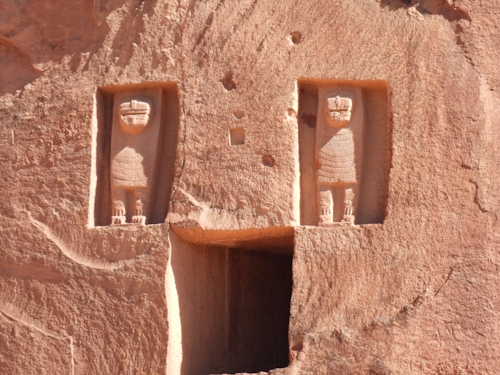Blog Countries
Top Tips for Saudi Arabia
I just spent 8 days in Saudi Arabia. It hadn’t been high on my travel wish list, but it presented itself as a convenient stop-over on my way to Pakistan. You can find my itinerary here. I am glad that I did it, despite the pitfalls described below: Saudi Arabia never has been as open before as it is now. Maybe it’s better to go in 5 years when they have ‘finished’, but who knows which way the political winds will blow then? Herewith are some tips for travelling to Saudi Arabia as a WH Traveller.
1. They don’t adhere to the WHS Commandments
Saudi must be among the worst followers of the WHS Visitor Commandments – you’ll hardly find anything that could pass for a plaque, most sites are first inscribed and only afterward made ready to receive tourists, there can be unannounced closures when bigwigs show up and they don’t like you looking around on your own at archeological sites. There usually is some on-site explanation available in Arabic and English, but it is generally of little depth.
They seem to have created a few Commandments of their own though, such as: “Don’t open a site before the shops and restaurants are ready”. Or: “Hide places from sight that look unrestored or are not instagrammable, by surrounding them with huge cardboard walls!”
2. Don’t expect to see ancient or pretty mosques.
Saudi Arabia’s current WHS don’t hold any Islamic religious sites. You won’t find anything here like the monumental building tradition of the Umayyads or the Timurids, or even the fine rural Sudanese-style mosques. The Saudi kind of Islam does not care for them - they have to be large, practical and with modern amenities such as air conditioing and clean toilets. Even in Medina, where the first mosques of the world originated, their foundations have been erased. Anything that looks remotely pretty likely dates back to Ottoman times (such as the Mosque of Al-Ghamama in Medina, photo 2).
3. Be aware that practical info is outdated within a year
Things change fast at the moment in Saudi Arabia, each year new possibilities are opening up. So any practical advice you find online from before 2021 is useless, expect everything to be more available and generally easier/better/more convenient. And leave the abaya at home: the official dress code nowadays is ‘keep your shoulders and knees covered’, and you really don’t have to go beyond that.
4. It isn’t that expensive
It’s not a cheap country, but still, prices of groceries, food in restaurants, taxi rides, etc are lower than in NW Europe or the USA. Entrance fees barely exist, but there also isn’t a lot that you can really enter. You can pay for everything everywhere with a credit card. Except for the taxi drivers in AlUla!
I see no reason to “do Saudi Arabia” on a tour nowadays – those tours still are very costly, similar to when Saudi Arabia was ‘closed’. Daily rates of 400-600 EUR are common, and then you still have to pay for your own food and are expected to tip. I read that it is because of the high hotel costs and the high fees earned by Saudi guides (the main reason I think is because they need to organize through a Saudi agency). I spent 215 EUR a day in the country (excluding international flights and visa, but including food, 4 domestic flights and a return ticket on the superfast train to Medina).
5. Public transport is improving
I covered my whole itinerary by public transport, using domestic flights, rideshare taxis, and trains to get around. I flew with FlyNas 4x. They are a budget airline (you even have to pay for water), but were always on time and did not check the height/weight of hand luggage. I had 3 rideshare taxi apps on my phone: Uber, Careem and Kaiian. I ended up using Uber the most in the big cities as I could pay with a card that way. Kaiian is the best for AlUla (see my Hegra review for specifics). They’re working on improving the inner city public transport, which is still almost non-existent. Riyadh plans to finish its first metro line in 2024 and they already have neat airconditioned bus stops for an expanding bus network. Jeddah and AlUla have plans as well.
6. It will teach you about subjects the average history podcast doesn’t
Overall, I did find it ‘interesting’ as you learn about the early history of Islam and early Arab civilizations. For me, Hegra and Medina were the highlights, with honourable mentions for the National Museum and the archaeological site of Dadan (photo 3). But travelling here can be pretty boring as well and 8 days was enough for me: the food is dull, the cities offer few sights, and the whole colour scheme of the country is comprised of one drab, sandy colour.
Els - 3 December 2023


